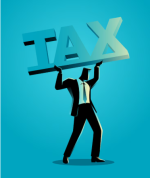In the world of finance, where every penny is traced, and every transaction analyzed, two players silently shape economies—Indirect Tax and Corporate Tax. You may not see them, but their impact echoes from multinational boardrooms to the snacks you buy at your local store.
They aren’t just tools for revenue—they are the pulse of economic regulation, influencing what companies produce, how consumers behave, and where investments flow.
Swipe your card for a pizza or buy a new phone—you’ve just paid an indirect tax.
Indirect taxes are cleverly tucked into the prices of goods and services. You don’t pay them directly to the government, but they end up there eventually. Common types include:
What makes these taxes intriguing is how they interact and influence decision-making.
For instance:
In short, both taxes are steering the ship of business—just from different decks.
Today, both tax types are undergoing transformations:
Indirect and corporate taxes are not just financial terms. They’re the quiet architects of a nation’s economy. They decide how your favorite products are priced, how jobs are created, and how companies grow—or shrink.
Whether you’re a taxpayer, a consumer, or a budding entrepreneur, understanding this duo isn’t just smart—it’s essential.
They aren’t just tools for revenue—they are the pulse of economic regulation, influencing what companies produce, how consumers behave, and where investments flow.
Indirect Tax: The Invisible Price Tag
Swipe your card for a pizza or buy a new phone—you’ve just paid an indirect tax.
Indirect taxes are cleverly tucked into the prices of goods and services. You don’t pay them directly to the government, but they end up there eventually. Common types include:
- GST (Goods and Services Tax)
- VAT (Value-Added Tax)
- Excise duties
- Customs duties
Where the Two Collide: Strategic Decision-Making
What makes these taxes intriguing is how they interact and influence decision-making.
For instance:
- A company may reduce prices if indirect taxes drop, boosting sales.
- High corporate taxes might lead to reinvestment instead of distributing profits.
- Indirect taxes affect demand, corporate taxes affect supply and strategy.
In short, both taxes are steering the ship of business—just from different decks.
The Global Shift: Transparency & Tech
Today, both tax types are undergoing transformations:
- Digital taxation is evolving with the rise of tech giants.
- Global minimum corporate tax deals are being inked to prevent tax havens.
- AI and automation are revolutionizing tax compliance and auditing.
Final Bytes
Indirect and corporate taxes are not just financial terms. They’re the quiet architects of a nation’s economy. They decide how your favorite products are priced, how jobs are created, and how companies grow—or shrink.
Whether you’re a taxpayer, a consumer, or a budding entrepreneur, understanding this duo isn’t just smart—it’s essential.

